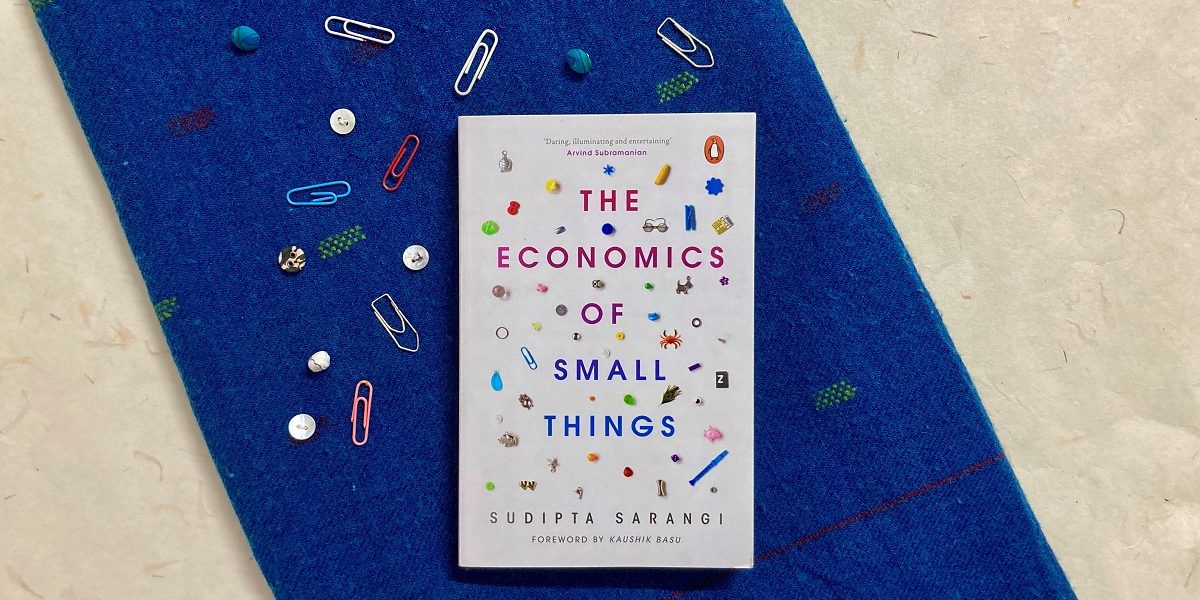
Why are all the good mangoes exported from India? Why should we pay our house help more? Why do we hesitate to reach out for that last piece of cake in a gathering? Are more choices really better? Why do many of us offer a prayer but are reluctant to wear a seatbelt while driving? Are Indians hardwired to get grumpy at a peer’s success? What’s common between a box of cereal and your résumé?
Can economics answer all these questions and more? According to Dr Sudipta Sarangi, the answer is yes. In The Economics of Small Things, Sarangi using a range of everyday objects and common experiences like bringing about lasting societal change through Facebook to historically momentous episodes like the shutting down of telegram services in India offers crisp, easy-to-understand lessons in economics. Giving us more insight into his new book, Sudipta Sarangi tell us how economics can answer all our curious questions. Read on!
**
The Economics of Small Things approaches economics, and in particular economic theory by identifying it in the little things around us, in the quotidian as well as the quirky aspects of everyday life. This book promises to be different – it sets itself apart right from the Introduction which begins with a timeline of events like a in Fredric Forsythe thriller. Instead these are daily events in the life of ordinary Indians – like having the morning cup of tea, and the office commute to what happens at lunch. Believe me there is economics in all of that!
Unlike other popular books on economics, The Economics of Small Things has a distinctly Indian flavor. Take Chapter 1 for instance – it explores the unholy trinity of asymmetric information: adverse selection, moral hazard and costly auditing but in the context of the Grameen Bank and joint liability lending. Then the book explains why the village Md Yunus, the village Sahukar and Munimji (aka Jeevan) all succeeded while the formal banking sector did not. The book delves into many other such Indian themes like chappal chori at temples, T20 and ODI, and what is the best strategy for shoe shopping. It has 25 chapters but covers the entire gamut from A to Z!
Generally, depending on your level of exposure, economics is either considered expansive and somewhat stodgy, or filled with indecipherable Greek letters and numbers. The Economics of Small Things provides a surprising departure from this – it is written in an easy style with a dash of humor that almost seems counterintuitive to economic theory. It will appeal not only to high school students and their teachers but also to corporate executives; actually anyone who is curious. The refreshing, lighthearted style makes it an easy read. The chapters are big on ideas, short in size – to be enjoyed just like a delicious petit four.

The concluding Coda provides a set of six takeaways. For example, it says that cognitive costs matter – which is why people use heuristics. It is also one reason why we stereotype people. Another take away is that heterogeneity matters – a idea that is not strange to Indians given our wide diversity. But the point really is that since people like different prefer levels of comfort in their airplane or train seats, like different flavours of masala oats, or like a professor and her student have a different values for time, it gives firms an opportunity to sell different products at different prices, thereby making higher profits. Summing it all up The Economics of Small Things says “…economics matters, and it matters not only in the abstract, but it matters in the little things in our personal lives and for a great many of our social interactions.”
**









